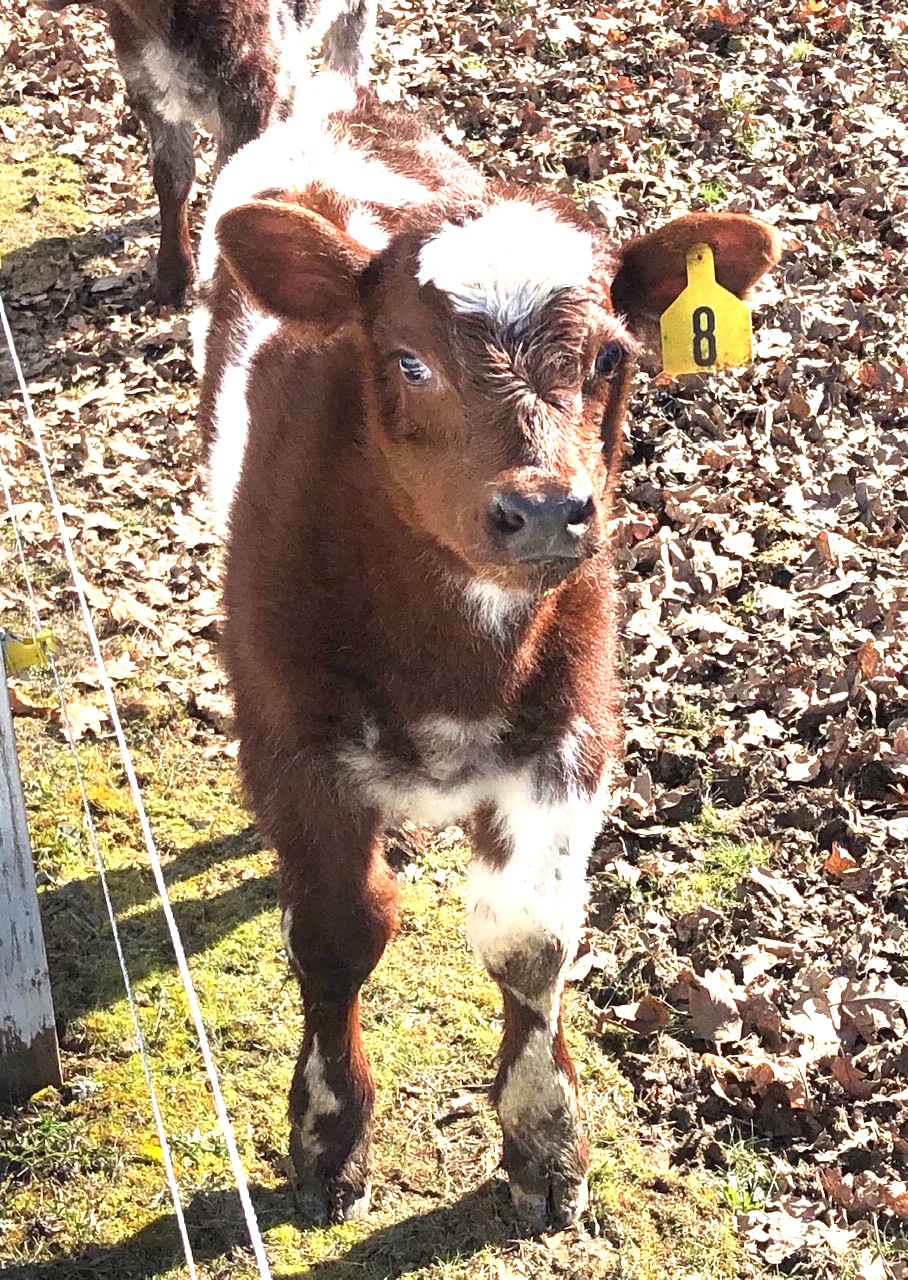It seems to have happened to most breeders of Shorthorn cattle. You find a beautiful new calf and upon walking to it's head to apply an ear tag, there it is! A coal black nose or, perhaps, just smoky or mottled—in any case, it is not what you would have expected from the calf’s heritage. What a disappointment!
In the past, this was cause for immediate cull of the animal because an off-color nose made the animal ineligible for registration. In many cases these animals could never be shown, and even as late as the 1970's judges still discriminated against such animals. This topic has been the subject of conjecture and recurring discussion for many years. Most people seem to believe that this nose color comes from an infusion of impure blood and hence the prohibition on registration or showing; however, this did not appear to be an issue to the earliest developers of the breed. To justify this statement, we can go back in time to the late 1700's, to a bull registered as Barker's (Richard) Bull (52). He was described as "red and white, born in 1784 at Darlington, bred by Mr. Richard Barker; got by Mr. Hill's Red Bull out of a cow sired by Lakeland's Bull". Barker's Bull (52) was the sire of many of the best early Shorthorns, and was commonly known as "Dicky Barker's Black Nose". This bull was the sire of Mr. Charles Colling's bull Foljambe (263).
Foljambe (263) was described as “white with a few red spots and a dark nose, handle good, wide back, dark face, a large strong bull, useful, big boned, and thick beast of great substance."
Charles Colling used him in his herd and he considered that Foljambe left him the best stock which he had. Foliambe was the double grandsire of Favorite (252).
Favorite (252) was described by Mr. George Coates (originator of Coates' Herd Book) as a "large beast with a fine, bold eye, body low down, low back, and other parts very good." Another early breeder described Favorite as a "grand beast, very large and open, had a fine brisket, with a good coat, and as good a handler as ever was felt". He was calculated to be 19.2% inbred since both his sire and dam were sired by Foljambe, with additional linebreeding from other early animals. He was born in 1793 and died in 1809. He was used indiscriminately for a period of 13 years upon his own descendants, commonly to the third generation, and even to the fifth and sixth generations in one or two prominent instances. All this inbreeding was accomplished with no apparent deterioration in constitution or quality of his offspring.
Favorite was the most influential bull which the Shorthorn breed has ever produced, being described as a bull who "sired a breed"!. In 1925, it was estimated that his relationship to the breed as a whole was about 55% (Mendellian Analysis of The Pure Breeds of Livestock: Sewel Wright). As a double descendent from "Dicky Barker's Black Nose", it is easy to understand how Favorite would have stamped that quality in the breed as a whole and how it might occur randomly today in heritage Shorthorns.
To finish, a quote from Lewis F. Allen (the first editor of the American Shorthorn Herd Book) is appropriate. In his book History of the Shorthorn Cattle (published in 1872), he states: "In the earliest history of them we find that cloudy, smoky, or even black noses in the Short-Horns were frequent, and some of the most distinguished breeders had more or less of them among their best animals . . . dark noses are inherent in the race, cropping out, now and then in almost every herd, even to the present day . . . Shorthorns with unimpeachable pedigrees, and descended in herds long distinguished for their superior quality, which had either dark or cloudy noses. Nor have we ever known that the color of the nose at all governed the otherwise essential good qualities of the animal. . ."
So, when you see that dark nose, rejoice because it harkens back to the best of the origins of the breed!
Author Profile: Dr. Martin Lee
Martin Lee was raised on a small registered Milking Shorthorn dairy, and graduated from Colorado State University with a DVM degree in 1973. He was in general veterinary practice after graduating, but since 1978 he has operated Idalee Veterinary Services, specializing in Dairy Consulting in Jerome, Idaho. He was the owner of Idalee Milking Shorthorns, which was the highest producing Milking Shorthorn herd in the world for many years between 1996 and 2006, until the herd was dispersed in 2006. One of his cows, Idalee Garnet Topsy-EXP, still holds the record for highest lifetime production for a Milking Shorthorn, with 318,330 lb. milk over 11 lactations. He currently has a herd of Beef Shorthorns with approx. 30 cows plus young stock and bulls, but in addition he still has 2 Native Milking Shorthorns.
Martin and his wife Susan Lee have each served multiple terms on the AMSS Board of Directors, and have each been National Presidents of AMSS. Susan Lee has also been very involved with dairy improvement and she has served terms as Director and as President of the National Dairy Herd Improvement Association. She currently manages the Idaho DHIA. Martin and Susan have a son and a daughter, plus 5 grandchildren.

